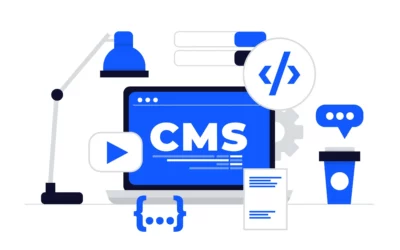Introduction
As the year winds down and 2024 approaches, now is the ideal time for product managers and teams to define their strategic vision and build a comprehensive roadmap for the year ahead. A well-crafted product roadmap serves as a guiding light, helping to align key stakeholders and set priorities to achieve business goals. However, creating an effective roadmap from scratch can be a daunting task. This guide provides a step-by-step process for developing your 2024 product roadmap to set your team up for success in the new year.
Start With Thorough Market Research
Start With Thorough Market Research
To develop an effective 2024 product roadmap, conducting comprehensive market research is essential. This involves analyzing your industry, competition, and target audience to gain invaluable insights that will shape your strategic vision.
First, evaluate your industry by conducting a PEST analysis of the political, economic, social, and technological factors impacting it. Next, perform Porter’s Five Forces analysis to understand the power of suppliers and buyers, competitive rivalry, and threats of new entrants and substitution. These methodologies will reveal opportunities and challenges to consider in your roadmap.
Second, analyze your direct and indirect competitors to pinpoint their strengths, weaknesses, tactics, and solutions. Identify areas for differentiation and improvement to build into your roadmap.
Finally, research your target audience through surveys, focus groups, and observations. Define their needs, wants, motivations, and barriers to uncover what will compel them to choose your product. Let these findings drive your roadmap’s feature prioritization and timeline.
After synthesizing your market research, you will have a broad understanding of your industry, competition, and customers to shape a strategic vision and build the foundation of your 2024 product roadmap. With diligent planning and validation of your ideas, you can craft a roadmap to position your product for long-term success. Continually revisit your research and revise your roadmap based on changes in the market to keep your vision aligned with key opportunities and ahead of challenges.
Market analysis is a critical first step in developing your product roadmap. By gaining insight into your environment, you can make strategic decisions to capture opportunities, gain competitive advantage, and deliver solutions finely tuned to your audience. Let your research fuel your roadmap, and your roadmap drives your product to success.
Define Your Product Vision and Set Measurable Goals
To build an effective product roadmap, you must first define your product vision and set measurable goals. A clear vision provides direction and purpose, while specific goals help determine priorities and guide decision-making.
Define Your Product Vision
Your product vision articulates your overarching aim and the problem you want to solve for your target customers. It should be forward-looking and inspirational. For example:
“Our vision is to revolutionize [your industry] by [how you’ll do it] for [target customers] to [key value proposition].”
Fill in the blanks to craft a vision tailored to your product and customers. The vision will shape your roadmap and rally your team around a shared purpose.
Set Measurable Goals
With a vision in place, establish 3-5 key goals to work toward over the next 6-12 months. Effective goals are:
- Specific and quantifiable. For example, “Increase new user signups by 25% year over year.”
- Aligned with your vision. Your goals should logically build toward achieving your vision.
- Challenging yet achievable. Push your team outside their comfort zone but set realistic targets.
- Time-bound. Deadlines create urgency and accountability.
Review and revise your goals regularly based on key performance indicators and market changes. Goals provide milestones to work toward and metrics to determine if you’re on the right track.
Defining your product vision and measurable goals is a pivotal first step in developing your roadmap. With purpose and priorities established, you can determine the features, resources, and strategic initiatives needed to achieve your vision and reach each goal. A clearly articulated vision and set of goals will guide your team to build a product poised for success.
Prioritize Minimum Viable Product Features
To build an MVP, determining which features to prioritize is crucial. Focus on the features that will provide the most value to your early customers and align with your key goals.
Identify Key Goals
Review your product vision and business objectives to determine 3-5 key goals for your MVP.
For example, if your vision is to create an intuitive project management tool, key goals may be:
- Enable users to organize tasks in a visual way
- Provide an easy way for teams to collaborate
- Track project progress and milestones
Determine Minimum Features
For each goal, determine the minimum features needed to achieve it. Using the example above:
- Enable users to organize tasks in a visual way
- Create visual task boards with columns for different stages
- Allow drag and drop to move tasks between columns
- Provide an easy way for teams to collaborate
- Comments section for discussions on each task
- @mention teammates to assign them to a task
- Integrate with messaging apps like Slack for notifications
- Track project progress and milestones
- Set start and due dates for tasks
- View tasks in a calendar view
- Create milestones to group important tasks
Prioritize and Refine
Review your list of minimum features and refine by:
- Removing or combining any features that are redundant or not critical for your MVP goals
- Prioritizing remaining features based on the highest value to users and your key objectives
- Estimating the level of effort for each feature to build your roadmap
- Leaving room for iteration – your MVP should be a starting point to get user feedback and insights to build upon
Following this process will help you determine and prioritize the minimum viable product features to include in your product roadmap and build an MVP that aligns with your vision. Continually revisiting your goals and priorities as you get customer feedback will ensure you stay on the right path to success.
Choose the Right Tech Stack and Estimate Resources
Choose the Right Technology Stack
When building your product roadmap, selecting an appropriate technology stack is critical to success. The tech stack refers to the programming languages, frameworks, libraries, and tools you will use to develop your product. Choosing technologies that align with your product vision, team skills, and customer needs will enable you to build an MVP efficiently.
Some factors to consider when choosing a tech stack include:
- Product requirements: The needs of your target customers and product features will determine suitable technologies. For example, if building a mobile app, consider native iOS and Android or cross-platform options. For an AI product, evaluate machine learning frameworks.
- Team experience: Opt for technologies your team has expertise in to accelerate development. If lacking key skills, budget time for team members to learn new technologies or consider hiring additional resources.
- Scalability: As your product and customer base grow, the tech stack must be able to scale to support the increased load and new features. Consider both horizontal and vertical scaling options.
- Integration: The ability to integrate with third-party tools and systems is important for many products. Choose technologies with strong integration support.
- Cost: Some tech stacks require expensive licenses or cloud services. Compare options to find a balance of capability and cost that fits your budget.
With a tech stack selected, estimating the resources required for your MVP is essential for budgeting and planning. Break each product feature into specific tasks, and determine the time and team members needed to complete each one. Factor in time for testing, deployment, and potential rework. Consider working with an experienced software development partner who can provide guidance on resource estimation for your product.
Defining a strategic tech stack and estimating the necessary resources are pivotal steps in crafting your product roadmap. With the right technologies and team in place, you will be poised to build an MVP that delights your first customers and provides a foundation for future growth.
Create and Iterate on Your Living Product Roadmap
To build an effective product roadmap, you must create and iterate on a living document that adapts to changes. As you develop your roadmap, revisit and revise it regularly based on insights from your target customers, industry trends, and business goals.
Define Your Vision
Start by establishing a clear vision for your product that aligns with your company mission. For example, “Our vision is to create [product name] to [goal] for [target customers] by [solution].” This vision will guide strategic decisions throughout the roadmapping process.
Set Measurable Goals
Next, define specific, measurable goals that support your vision, such as “Increase monthly active users by 25% in six months.” These goals will determine the features and milestones in your roadmap. Focus on building an MVP that delivers core value to early adopters.
Prioritize MVP Features
Determine the minimum features needed for your MVP based on your goals. For example, to build a fitness app, focus first on:
- User profiles
- Onboarding
- Exercise tutorials
- Progress tracking
Avoid lower-priority features that do not directly support your vision and goals. Continually reprioritize features based on user feedback and market changes.
Review and Revise Regularly
A product roadmap is a living document. Meet regularly with your team to review the roadmap and ensure initiatives still align with your vision and goals. Make revisions as needed based on insights from customers, competitors, and industry experts. Continual iteration and improvement will guide your product to long-term success.
Building a strategic product roadmap requires planning, research, and adaptation. Define a clear vision, set measurable goals, prioritize MVP features, and revise the roadmap regularly based on key insights. This process will provide the guidance and flexibility needed to navigate the challenges of product development.
Conclusion
As you plan your product roadmap for the next year, remember that strategic vision and execution are equally important. A roadmap is only as useful as your ability to navigate it. Take the time to understand your business goals, your customers’ needs, and the latest industry trends. Then determine what product innovations will drive the most value in moving the needle for your company. Build milestones to evaluate progress and make adjustments as needed to stay on course. With a clearly articulated vision, a well-designed roadmap, and the determination to see it through, you have the power to shape the future of your product and business. Now get out there and make 2024 your most impactful year yet.





